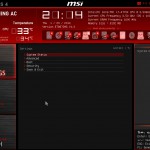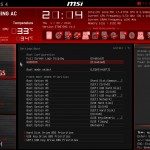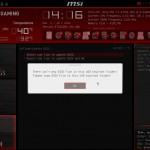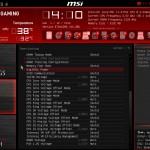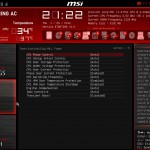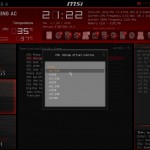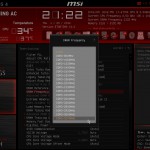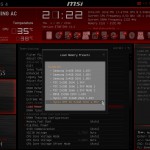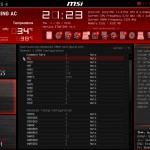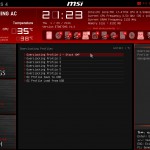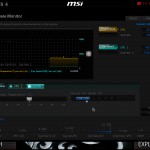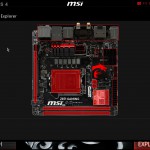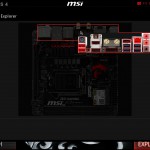Firstly, we are pleased to report that our Leetgion Hellion mouse worked to its usual standard in the MSI Z87I Gaming AC motherboard’s UEFI BIOS.
MSI’s Z87I Gaming AC uses the Click BIOS 4 interface that is equipped with the rest of the company's Z87 Gaming Series motherboards, including the Z87M Gaming and Z87-G43 Gaming.
There are subtle differences between the interface on each board, the most notable of which relates to parameters for the OC Genie profile; MSI’s Z87I Gaming AC only includes one OC Genie 4 configuration, not two like some of the other Gaming Series boards.
Upon launching into the Z87I Gaming AC’s UEFI BIOS, users are met by a large image of MSI’s G Series dragon. Six specific sub-sections can be accessed via the main page. System information is constantly displayed at the top of the UEFI page.
Settings can be adjusted on an allocated page. MSI includes a convenient parameter which allows users to boot their system directly into the UEFI BIOS by holding the power button for 4 seconds. This is similar in concept to Asus’ ‘DirectKey’ button.
M-Flash is MSI’s version of updating the BIOS via a USB flash drive. Unlike many of its competitors’ implementations, MSI’s tool is limited to searching through a flash drive’s root folder for the necessary file. This is a little disappointing given that MSI’s competitors are able to search within a drive’s folders.
MSI provides plenty of adjustable voltage, frequency, and power settings which give users a good degree of control over their system – a degree far greater than many mITX users will require. Layout-wise, the OC page is a mess. Readouts are mixed together with input parameters, making the page somewhat difficult to understand.
MSI would be wiser to separate readouts and adjustment parameters to make the interface easier to use.
The ‘DigitALL Power’ section provides users with additional parameters to adjust power, voltage, and current settings.
High memory multipliers can be selected and a host of timings parameters can be adjusted. The Z87I Gaming AC motherboard’s BIOS is equipped with preset memory profiles that make use of tweaked overclocking configurations for specific kits, including a setting for the enthusiast-grade 3GHz Hynix MFR.
Up to six OC profiles can be saved and named. This is a good number to provide as it gives users flexibility when testing out different overclocking configurations. Profiles can also be imported and exported from or to a USB drive for backup and sharing purposes.
MSI employs a complex, feature-heavy fan and temperature control system. The interface allows a specific fan channel to be selected and then its notable speeds to be tied in with certain temperature targets. The CPU fan header gets a greater level of control in regards to minimum fan speed, but the system fan channel also provides a good degree of flexibility.
While the graphical approach may be a little confusing to some users, a small amount of practice allows it to become an efficient way of mapping fan speed settings with temperature targets.
One of the most useful features in MSI’s BIOS is Board Explorer. The tool displays an image of the board which highlights the components that are installed. Hovering over the specific sections displays information regarding the connected components or devices.
The tool has great potential as a troubleshooting measure. For example, a faulty memory stick can be easily identified if its function isn’t highlighted in the board explorer tool.
Overall, the BIOS interface used by MSI’s Z87I Gaming AC is good, but it still isn’t quite at the level of Asus’ and, to a lesser extent, ASRock’s typical implementations.
Regarding style, MSI’s attractive interface is excellent. Board explorer and the inventive fan control system are more strengths of the interface. Mouse compatibility was also better than that offered by the interfaces of many competing vendors.
But in terms of ease-of-use MSI’s UEFI would benefit from some improvements. The main issue is the disordered OC section which can become difficult to navigate and understand, although this is unlikely to be a major problem for many users of a mITX motherboard.
 KitGuru KitGuru.net – Tech News | Hardware News | Hardware Reviews | IOS | Mobile | Gaming | Graphics Cards
KitGuru KitGuru.net – Tech News | Hardware News | Hardware Reviews | IOS | Mobile | Gaming | Graphics Cards



